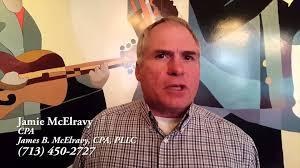When I bought my practice in 2003, I inherited a couple of big businesses, a lot of mom-and-pop shops, a couple of staff and a bit of confusion. That first year we did around $200,000, but I was so busy trying to get the work done that I didn't look up to see if I was making any money. It wasn't until I signed up with Sterling Management in 2006, and read a definition of "bad executive" that I discovered it matched me perfectly and heard myself say, "Oops."
Before Sterling, I wasn't keeping track of who was on which project, how far along each was, or when they would be finished. We'd run so close to the deadline that I'd have to take over and finish everything to get the work done on time. It's extremely important that these clients get their SEC files in on time. This became even more important after I became registered with the PCAOB (Public Company Accounting Oversight Board) and began having people calling, wanting to use me for audits.
One of my goals, when I came out to Sterling, was to smooth my office out and get my staff on the same page I'm on. After my basic executive training, I started reorganizing and getting billable hours up. My staff were getting 60-65% billable while complaining how hard it was, "Because…" Of course, every "because" was followed by "reasons why" it couldn't be done. I handled their "reasons," in part, by sorting out who was responsible for what area of the practice.
With the added confidence I achieved through my Sterling training, I had little trouble telling my staff that I expected their billable hours at 90%. They said "No way. We're not going to be able to do that." I stood my ground and said, "Well, that's what I expect." Funny, the person who was most adamant about 90% being impossible has been steadily billing at 88 to 89%. It's gone from being impossible to being a point of pride. In the past, her response had been "We're not going to talk about that." Now the whole staff's attitude seems to be, "Yeah, we can do that."
We started a game and they all met their billing goals. I think the number one reason my billable percentage is up is that, as an executive, I expect it to be up. I never could have said that before Sterling.
I used to let things slide a little bit. Sometimes, I got a little lenient on my collections. A lot of my clients are friends, so it was hard for me to say, "Hey, you need to pay me or I'm not going to do your work." Through Sterling training, I've grown more willing to communicate and to face things. Now my clients, the people that write the checks, understand that if they want Jamie to do something for them, they're going to have to pay him.
There are hard things that I tend to hide from, things that I need to address if I want to succeed. That's one of many areas my Sterling consultant helps with. If something in the practice needs to be addressed, she says: "Hey, this needs to be handled. You need to do it." That's been good for me. A lot of times when I'm working and run across one of these hard issues I've wanted to hide from, I know my consultant is going to ask why I hid, and I face up to it. I've grown in the process.
Before Sterling, I didn't know what kind of statistic I should keep for my business, or why I should keep it, or what to do with it if I tracked it. In the old days, the work would come in, I'd do it, I'd get paid, and I'd go on to the next job. But I never seemed to make significant progress. I've seen people work themselves out of business that way. They're sitting there doing all kinds of work, head down, getting all kinds of business, and finally they look up and say, "Hey, nobody's paying me. I'm losing money on every job." That's not me.
I'm getting out there more than I was. I've given talks at Rotary and Kiwanis Club meetings. I don't know what I said, but one new client came in and told me that she'd been asking around for someone to do her taxes. She got the same response about every CPA she brought up, "Well they're OK but no better than you could do on Turbo-tax," until one guy told her, "I know. You need to go see Jamie." He'd heard me speak at a Rotary Club—he's not my client. In the last seven days, I've picked up eleven new clients—somewhere between $15,000 and $25,000 in annual revenue depending on the package.
Last year we did $420,000, with the same number of staff we had when we did $200,000. I'm sitting with the same number of people the former owners had, but I'm doing twice as much business.
Jamie McElravy, CPA

